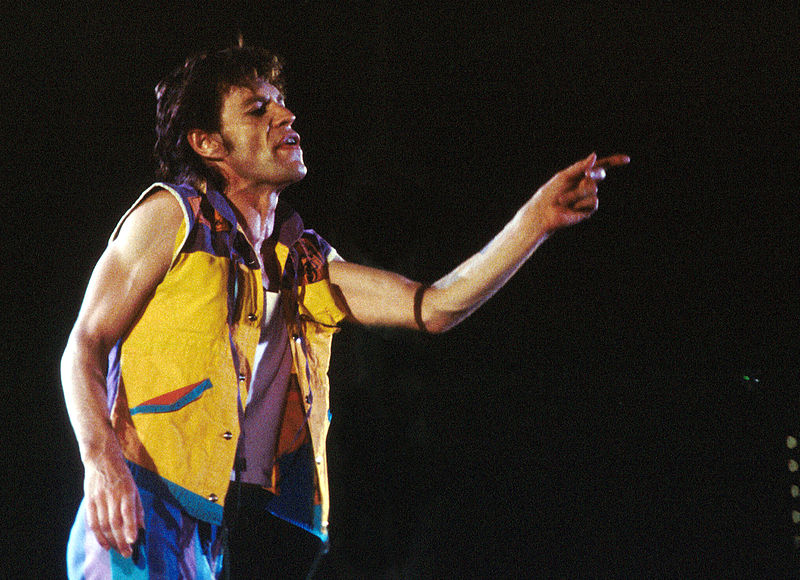Image credit: Rolling Stones 09” by Gorupdebesanez – Own work. Licensed under CC BY-SA 3.0 via Commons-https://commons.wikimedia.org/wiki/File:Rolling_Stones_09.jpg#/media/File:Rolling_Stones_09.jpg
Womenlines takes pleasure to welcome Michel Neray, a professional speaker, consultant and founder of momondays as a guest Influencer on Womenlines panel, sharing his expert knowledge related to public speaking with Womenlines readers. Michel has helped thousands of individuals craft and perform ‘purposeful’ stories to become more effective leaders, salespeople, coaches, teachers, trainers, speakers, and influencers of all types. He also uses Purposeful Storytelling to more effectively differentiate, position and brand organizations in the market. In this article, Michel is sharing how to improve your stage presence while delivering a speech-
Mick Jagger has it. So do Leonard Cohen and Bruce Springsteen. David Bowie and Prince certainly did. Bob Marley performed in a kind of a trance that literally had audiences transfixed. Freddie Mercury was legendary on stage. Oh, and have you ever seen Michael Jackson? Among women performers, I immediately think of Tina Turner, Beyonce, Grace Jones, Madonna. Among speakers, Tony Robbins and Les Brown have it. Zig Ziglar absolutely had it.
I often ask participants of moSpeaker masterclasses what stage presence is, and I always get a variety of answers: confidence; the ability to engage the audience; believability; energy…
Stage presence seems to be one of those things that we can all recognize when we see it, we all want it for ourselves, and we ‘think’ we know exactly what it is, but as soon as we try to define it, no combination of words seems to fit quite right.
Oxford Dictionary defines ‘Stage Presence’ as ‘The ability to command the attention of an audience by the impressiveness of one’s manner or appearance.’ Well, yes, but like the responses I get in the masterclasses, that definition also seems to sidestep the real character of stage presence. If we can all recognize it when we see it, then let’s not bother with trying to define it. Instead, let’s put a spotlight on how you can get it.
After watching and listening to thousands of speakers on the momondays stage, and after speaking on stages in over eight countries around the world for the past 20 years, I think I’ve learned a thing or three about what works and what doesn’t when it comes to stage presence.
1. Forget all the tricks & techniques you learned in ‘speaker school 101’.
Tricks & techniques such as ‘power stances’, smiling, and classic hand gestures for speakers are wonderful to learn when you start out. They really are. But at some point, you have to forget everything you’ve learned. Relying on tricks & techniques ‘too much’ will make your performance appear mechanical and inauthentic. Instead, stay connected to the feeling and emotion of the story you are telling, and allow that to inform your physicality.
2. Don’t believe the most mis-guided speaker advice ever given: It’s not about you…
…it’s about the audience, right? I’ve heard this so many times, it hurts. Of course, you want to get your message across and of course, you want to have a meaningful, positive impact on the audience. It may be counter-intuitive, but placing your focus on these things actually get in the way of truly connecting with your audience. It really is about you first, not the audience. Remember, your most powerful performance is when you re-experience your own journey and allow the audience to come along for the ride with you. That journey begins with being connected to yourself, and it forces you to be present, vulnerable, authentic, confident — all those attributes that we associate with stage presence.
3. Give yourself an out-of-body experience by developing 3rd perceptual position awareness.
Instead of trying so hard to connect with the audience, develop an awareness of yourself, and of yourself in relation to the audience, outside yourself. It’s like having an out-of-body experience. In NLP, (Neuro-Linguistic Programming), we call this 3rd perceptual position. It takes practice, (and there are some exercises in the moSpeaker masterclass that help you develop it.) The third perceptual position allows you to gain a true experience of what stage presence actually feels like, which enables you to recreate it more intentionally in each performance.
Stop caring; start crafting.
Some people believe you are born with stage presence; other people believe anyone can develop it if they just work on it. Some people believe that stage presence is the platform on which everything else in your performance sits. Other people believe that stage presence rests on everything else in your performance.
Whatever you believe, one thing is undeniably clear — stage presence is linked to everything in your performance — the story structure, the writing and turns of phrases, your humour, your intentional pauses — as well as a host of other things that you can and must continually work on.
Stage presence is as individual as the performer or speaker who has it, and it takes time to develop. This is perhaps the most important thing about stage presence. If you take every opportunity to get on stage — and I mean every opportunity — whether it’s for speaking, karaoke, open mics, acting, improv or stand-up comedy, you will develop your own brand of stage presence… which is, when you really think about it, the only stage presence there is.
















